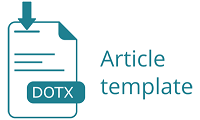KARAKTERISTIK PARTISIPAN SKRINING HUMAN IMMUNODEFICIENCY VIRUS/ACQUIRED IMMUNODEFICIENCY SYNDROME (HIV/AIDS) DI KLINIK TEST HIV AIDS MANDALIKA RUMAH SAKIT UMUM DAERAH PRAYA
DOI:
https://doi.org/10.32807/jkp.v9i2.72Abstract
Abstract: Progression of HIV (human immunodeficiency virus) or AIDS (acquired immunodeficiency syndrome) in Indonesia has become increasingly serious. When the number of cases in the world are gradually fall, ironically, Indonesia is actually classified as a concentrated state with endemic levels of HIV / AIDS. According to Ditjen PP & PL Ministry of Health Republic of Indonesia, HIV and AIDS cases in Indonesia from January to December 2013 has been recorded as a cumulative as many as 143 899 98 390 cases consisting of 45 499 cases of HIV and AIDS by 8235 death. Central Lombok is one of regency in Indonesia that was ranked on 4th in number of cases of HIV / AIDS with AIDS prevalence (2.6 per 10,000 population) compared with other districts.Methods: This study is a descriptive study using secondary data. This research population is all participants who visited and checked into KTH Mandalika Praya of Hospital in January to December 2013 as many as 2,223 participants. Formula slovin of 400 participants with systematic random sampling technique were used for the sampling. The data processing and data analysis was calculated by using SPSS version 18 with a descriptive test analysis.The results showed that participants who followed the screening of HIV / AIDS in KTH Mandalika Praya of Hospital were mostly male (71.5%), aged 25-49 years (41.8%), high school education (30.8%), and worked as a self employed (45.8%). Meanwhile, for HIV-positive test results showed that there were mostly the male (52.6%), aged 25-49 years (63.2%), junior high school education (31.6%), and worked as a self employed (52, 6%). Implementation of early screening HIV / AIDS can detect the most dangerous infectious diseases, especially HIV / AIDS.





